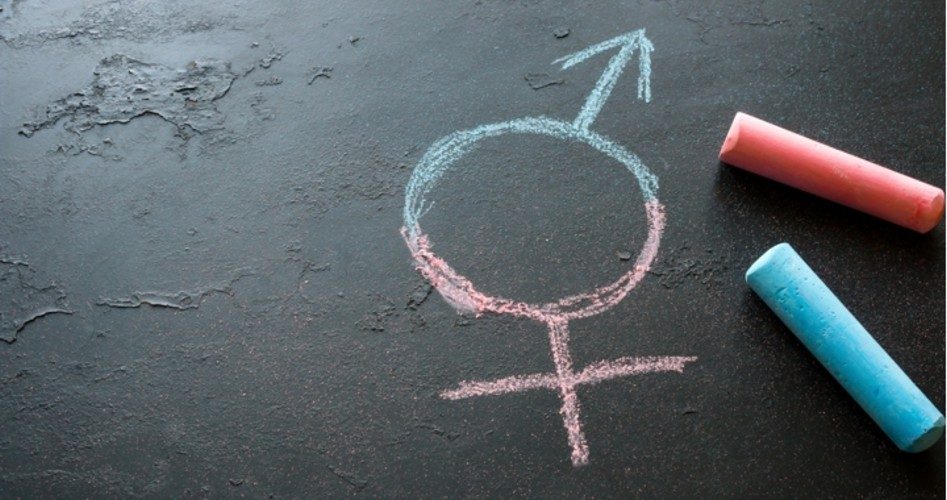
This could only happen in the age of “transgender” ideology. In Brazil, a woman and her lesbian partner removed her nine-year-old son’s penis, claiming that he “wanted to be a girl.” A year later they murdered him, with the mother stating that she hated her son because he reminded her of her father.
As the Pluralist reports:
Rosana Auri da Silva Candido and Kacyla Priscyla Santiago Damasceno Pessoa on May 31 stabbed the boy to death in his sleep, cut him into pieces and tried to burn the body party [sic] on a grill at their home, Metropoles reported last week, citing the police. Candido is the biological mother of the boy, whose name was Rhuan Maycon da Silva Castro.
Witnesses called police after noticing the couple walking through a soccer field with a suitcase containing Rhuan’s corpse. When officers responded to the family’s home, they found the women there with Pessoa’s 8-year-old daughter.
Authorities later located Rhuan’s remains in two backpacks in the area: one on the lot where the couple resided and the other in front of a nearby day care center.
The couple, who remain in police custody, showed no remorse for their actions while being interrogated.
According to Metropolis, the boy was also beheaded while still alive.
Providing more detail, Fat reports that the boy was separated in 2015 from his father, and the women didn’t have custody of either Rhuan or the eight-year-old girl. (Note: Most sources identify the boy’s age as nine; however, Fat states that he was seven in 2015.)
For the father’s part, he’d “desperately been trying to save his son from the clutches of the boy’s deranged LGBTQP mother and her partner, who reportedly moved ‘across states and around the country’ to avoid being caught,” reports Natural News.
“‘We tried to save Rhuan,’ Rhuan’s father told the press. ‘We published messages on the social media, [sic] we contacted police and the Child Protective Services. No one helped us.’”
Unsurprisingly, sources say Rhuan was tortured and had been a victim of rape (they don’t indicate by whom). Candido also confessed that the penectomy was performed with “rudimentary tools,” Pluralist further relates. “After removing his penis, the women said they sewed an improvised version of the female organ onto the mutilated area.”
“The wom[e]n did not detail how they treated the boy for such a procedure and its possible consequences, such as infections and pains,” Fat tells us (auto-translated from Portuguese). “Asked about the reason for this act, Rosângela stated that for her and her companion, the boy wanted to become a girl. That’s one of the reasons they keep Rhuan with long hair — he was like that when he died.”
As stated earlier, Candido also admitted that she hated her son because he reminded her of her father, who allegedly had abused her.
Since the two women obviously are quite deranged, poor Rhuan’s treatment would have been shoddy regardless. Yet it’s hard to imagine this story unfolding as it did absent “transgender” ideology. After all, where does a person get the idea that a “boy can become a girl” and that superficial mutilation effects this change in being? Making ideas part of the public consciousness has consequences.
Of course, maybe Rhuan “wanted to become a girl,” or perhaps it was just that his two lesbian caretakers wanted him to. But the mother’s claim rings true, as I’ve seen this phenomenon before.
Some of you may remember Renee Richards. That’s the name assumed by Dr. Richard Raskind, the tennis player who made news in the late 1970s after having a so-called sex-change operation and, at age 43, beginning to play in women’s tournaments. (Note: I’ve met Richards. He lives in the county next to mine.) I mention him because an aspect of his story is relevant here.
Writing of his upbringing, Tennis.com related last year that “young Richard was dominated by his [psychiatrist] mother and his older sister, who dressed him as a girl. By 9, he had begun to dress himself that way.”
Is this at all surprising? A theory for your consideration: Tiny Rhuan and Richard both got the message that their mothers didn’t love them for who and what they were, boys, that, in fact, their maleness was an impediment to their receiving this love. Of course, a little boy wants and needs his mother’s love more than anything in the world. So is it hard to imagine that such a boy might want to “become a girl”? Note here Candido’s statement that Rhuan was doing it “for her and her companion.”
Yet there’s more. If a boy is confronted with this maleness-oriented maternal rejection when extremely young, might he not so assume a female character as a coping mechanism that he would actually begin to feel like a girl, deep down?
This would explain Richards’ and other men’s “gender dysphoria”: the sense that one really is member of the opposite sex on the inside, to put it simply. Of course, since this psychological phenomenon begins at an age before the person can remember, it makes sense that he would say he has “always felt this way,” which is something you hear from men thus afflicted.
The point? Though quack psychiatrists may today claim that gender dysphoria is a biologically induced phenomenon — an assertion for which they have no proof whatsoever — reason suggests that it’s a psychological one. And it wasn’t Candido and Pessoa who originated the idea of treating a psychological issue with a biological “remedy” (removing genitalia). It was “respected” people with medical degrees, and their enablers in and out of the media, who did that.
Graphic: itakdalee/iStock/Getty Images Plus



